NOVA
Season 40
s40e01 / Secrets of the Viking Sword
11th Oct '12 - 1:00am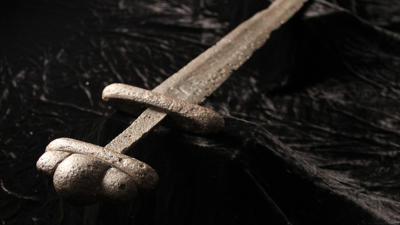
The Vikings were among the fiercest warriors of all time. Yet only a select few carried the ultimate weapon of their era: the feared Ulfberht sword. Fashioned using a process that would remain unknown to the Vikings' rivals for centuries, the Ulfberht was a revolutionary high-tech tool as well as a work of art. Considered one of the greatest swords ever made, it remains a fearsome weapon more than a millennium after it last saw battle. But how did Viking sword makers design and build the Ulfberht, and what was its role in history? Now, NOVA uses cutting edge science and old-fashioned detective work to reconstruct the Ulfberht and finally unravel the "Secrets of the Viking Sword".
s40e02 / Forensics on Trial
18th Oct '12 - 1:00am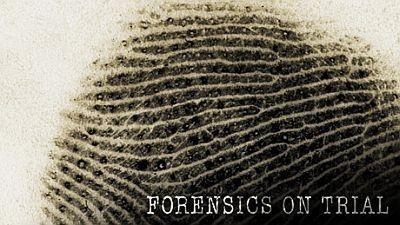
There is a startling gap between the glamorous television world of "CSI" and the gritty reality of the forensic crime lab. With few established scientific standards, no central oversight, and poor regulation of examiners, forensics in the U.S. is in a state of crisis. In "Forensics on Trial", NOVA investigates how modern forensics, including the analysis of fingerprints, bite marks, ballistics, hair, and tool marks, can send innocent men and women to prison-and sometimes even to passing row. Shockingly, of more than 250 inmates exonerated by DNA testing over the last decade, more than 50 percent of the wrongful convictions stemmed from invalid or improperly handled forensic science. With the help of vivid recreations of actual trials and cases, NOVA will investigate today's shaky state of crime science as well as cutting-edge solutions that could help investigators put the real criminals behind bars.
s40e03 / Mystery of Easter Island
8th Nov '12 - 2:00am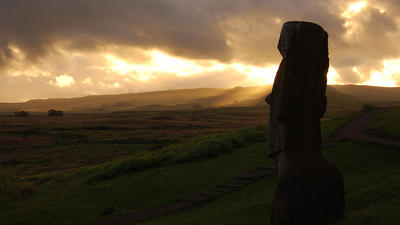
A remote, bleak speck of rock in the middle of the Pacific, Easter Island, or Rapa Nui, has mystified the world ever since the first Europeans arrived in 1722. How and why did the ancient islanders build and move nearly 900 giant statues, or moai, weighing up to 86 tons? And how did they transform a presumed paradise into a treeless wasteland, bringing ruin upon their island and themselves? NOVA explores controversial recent claims that challenge decades of previous thinking about the islanders, who have been accused of everything from ecocide to cannibalism. Among the radical new theories is that the islanders used ropes to "walk" the statues upright, like moving a fridge. With the help of an accurate 15-ton replica statue, a NOVA team sets out to test this high-risk, seemingly unlikely theory - serving up plenty of action and surprises in this fresh investigation of one of the ancient world's most intriguing enigmas.
s40e04 / Ultimate Mars Challenge
15th Nov '12 - 2:00am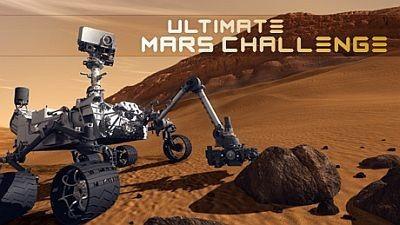
It could be NASA's last chance to set wheels down on Mars until the end of the decade: This August, a rover named Curiosity will touch down inside Mars. Gale Crater, carrying 10 new instruments that will advance the quest for signs that Mars might once have been suitable for life. But Curiosity's mission is risky. After parachuting through the Martian atmosphere at twice the speed of sound, Curiosity will be gently lowered to the planet's surface by a "sky crane". This first-of-its-kind system has been tested on Earth, but will it work on Mars? With inside access to the massive team of scientists and engineers responsible for Curiosity's on-the-ground experiments, NOVA will be there for the exhilarating moments after Curiosity's landing - and for the spectacular discoveries to come.
s40e05 / Inside the Megastorm
19th Nov '12 - 2:00am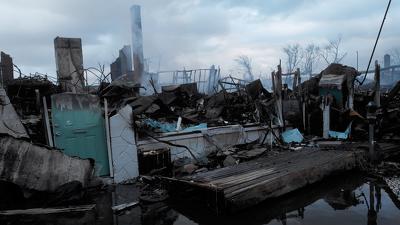
Was Hurricane Sandy a freak combination of weather systems? Or are hurricanes increasing in intensity due to a warming climate? How did this perfect storm make search and rescue so dangerous? "Inside the Megastorm" takes viewers moment by moment through Hurricane Sandy, its impacts, and the future of storm protection. Through first person accounts from those who survived, and from experts and scientists, "Inside the Megastorm" gives scientific context to a new breed of storms.
s40e06 / Doomsday Volcanoes
3rd Jan '13 - 2:00am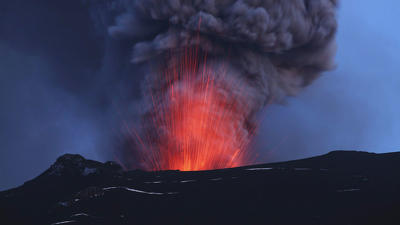
In April, 2010 the eruption of Iceland's Eyjafjallajökull volcano turned much of Europe into an ash-strewn no-fly zone, stranding millions of travelers. But was Eyjafjallajökull just the start? Now, an even more threatening Icelandic volcano, Katla, has begun to swell and grumble. Two more giants, Hekla and Laki, could erupt without warning. Iceland is a ticking time bomb: When it blows, the consequences could be global. As CGI takes us inside these geological monsters, we meet atmospheric scientists who are working to understand just how devastating an eruption could be-not just for air travel but for the global food supply and for Earth's climate. Could we be plunged into years of cold and famine? What can we do to prepare for the disaster to come?
s40e07 / Decoding Neanderthals
10th Jan '13 - 2:00am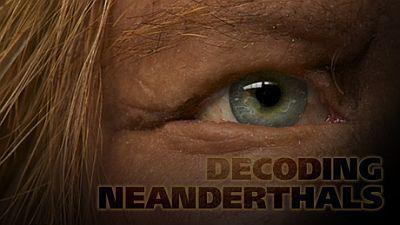
What happened when the first modern humans encountered Neanderthals 60,000 years ago? In 2010, a team led by geneticist Svante Paabo announced that they had reconstructed much of the Neanderthal genome and the analysis showed that modern humans and Neanderthals had interbred, leaving a small signature of Neanderthal genes in everyone outside Africa today. NOVA explores the implications of this exciting discovery. Were Neanderthals really mentally inferior, as inexpressive and clumsy as the cartoon caveman they inspired? NOVA examines a range of new evidence for Neanderthal self-expression and language, suggesting that we may have underestimated our long-vanished cousins.
s40e08 / Rise of the Drones
24th Jan '13 - 2:00am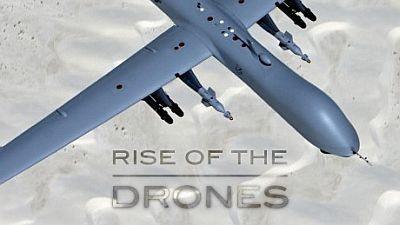
Drones. These unmanned flying robots-some as large as jumbo jets, others as small as birds-do things straight out of science fiction. Much of what it takes to get these robotic airplanes to fly, sense, andhug has remained secret. But now, with rare access to drone engineers and those who fly them for the U.S. military, NOVA reveals the amazing technologies that make drones so powerful as we see how a remotely-piloted drone strike looks and feels from inside the command center. From cameras that can capture every detail of an entire city at a glance to swarming robots that can make decisions on their own to giant air frames that can stay aloft for days on end, drones are changing our relationship to war, surveillance, and each other. And it's just the beginning. Discover the cutting edge technologies that are propelling us toward a new chapter in aviation history as NOVA gets ready for "Rise of the Drones".
s40e09 / Who Killed Lindbergh's Baby?
31st Jan '13 - 2:00am
In the aftermath of his 1927 solo transatlantic flight, Colonel Charles Augustus Lindbergh-the Lone Eagle-became the most famous human being on earth. And when he and his lovely wife Anne produced an adorable baby son, Charlie, an eager press quickly dubbed him Little Lindy or sometimes just the Eaglet. But on the evening of March 1, 1932 Lucky Lindy's luck ran out. Bold kidnappers snatched his baby from the family home near Hopewell, New Jersey, while everyone in the house was awake. Negotiations with the kidnappers stretched out for weeks. But Little Charlie never came back. His body was discovered not five miles from Hopewell. Now, NOVA is reopening one of the most intriguing, grisly, and confounding crime mysteries of all time as a team of expert investigators employ state-of-the-art forensic and behavioral science techniques in an effort to determine what really happened to Lindbergh's baby and why.
s40e10 / Building Pharaoh's Chariot
7th Feb '13 - 2:00am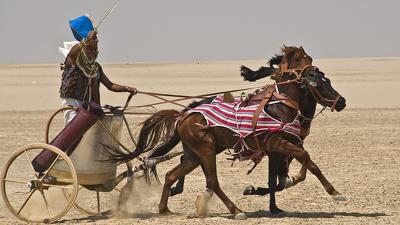
3,600-year-old reliefs in Egyptian tombs and temples depict pharaohs and warriors proudly riding into battle on horse-drawn chariots. Some historians claim that the chariot launched a technological and strategic revolution, and was the secret weapon behind Egypt's greatest era of conquest known as the New Kingdom. But was the Egyptian chariot really a revolutionary design? How decisive a role did it play in the bloody battles of the ancient world? In "Building Pharaoh's Chariot", a team of archaeologists, engineers, woodworkers, and horse trainers join forces to build and test two highly accurate replicas of Egyptian royal chariots. They discover astonishingly advanced features, including spoked wheels, springs, shock absorbers, anti-roll bars, and even a convex-shaped rear mirror, leading one of them to compare the level of design to the engineering standards of 1930's-era Buicks! By driving our pair of replicas to their limits in the desert outside Cairo, NOVA's experts test the claim that the chariot marks a crucial turning point in ancient military history.
s40e11 / Earth From Space
14th Feb '13 - 2:00am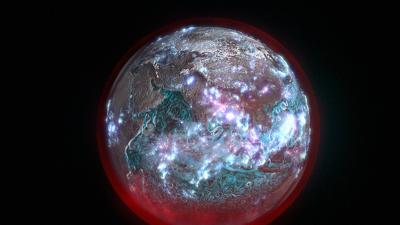
"Earth From Space" is a groundbreaking two-hour special that reveals a spectacular new space-based vision of our planet. Produced in extensive consultation with NASA scientists, NOVA takes data from earth-observing satellites and transforms it into dazzling visual sequences, each one exposing the intricate and surprising web of forces that sustains life on earth. Viewers witness how dust blown from the Sahara fertilizes the Amazon; how a vast submarine "waterfall" off Antarctica helps drive ocean currents around the world; and how the sun's heating up of the southern Atlantic gives birth to a colossally powerful hurricane. From the microscopic world of water molecules vaporizing over the ocean to the magnetic field that is bigger than Earth itself, the show reveals the astonishing beauty and complexity of our dynamic planet.
s40e12 / Mind of a Rampage Killer
21st Feb '13 - 2:00am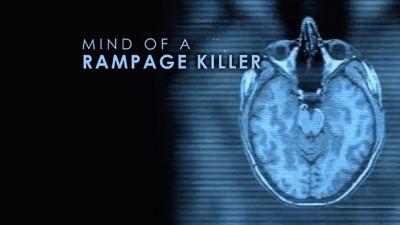
What makes a person walk into a theater or a church or a classroom full of students and open fire? What combination of circumstances compels a human being to commit the most inhuman of crimes? Can science in any way help us understand these horrific events and provide any clues as to how to prevent them in the future? As the nation tries to understand the tragic events at Newtown, NOVA correspondent Miles O'Brien separates fact from fiction, investigating new theories that the most destructive rampage huggers are driven most of all, not by the urge tohug, but the wish to die. Could sleeping-and the desire to go out in a media-fueled blaze of glory-be the main motivation? How much can science tell us about the unhappy brain? Most importantly, can we recognize dangerous minds in time-and stop the next Newtown?
s40e13 / Meteor Strike
28th Mar '13 - 1:00am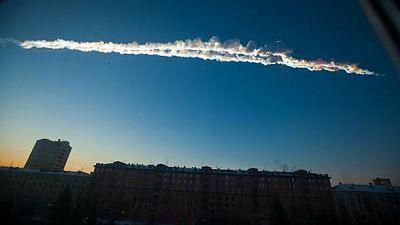
On the morning of February 15, 2013, a 7,000-ton asteroid crashed into the Earth's atmosphere, exploded and fell to earth across a wide swath near the Ural Mountains. The Siberian meteor was captured by digital dashboard cameras, a common fixture in Russian cars and trucks. Within days, armed with this crowd-sourced material, NOVA crews, along with impact scientists, hit the ground in Russia to hunt for debris from the explosion and clues to the meteor's origin and makeup. Is our solar system a deadly celestial shooting gallery - with Earth in the cross-hairs? What are the chances that another, even more massive, asteroid is heading straight for us? Are we just years, months or days away from a total global reboot of civilization, or worse?
s40e14 / Ancient Computer
4th Apr '13 - 1:00am
An unpromising lump of metal found in a 2,000-year-old shipwreck turns out to be an extraordinary treasure: the world's first computer. NOVA follows the ingenious detective work that painstakingly discovered the truth about the ancient Greek device: it was an astonishingly sophisticated astronomical calculator and eclipse predictor, unrivaled until the era of modern science and believed to be from the workshop of Archimedes.
s40e15 / Australia's First 4 Billion Years - Awakening
11th Apr '13 - 1:00am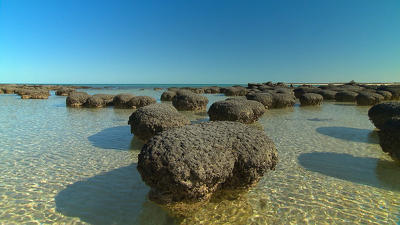
Hidden in the red hills of Australia are clues to the mysteries of Earth's birth, how life arose and how it transformed the planet into the world we now live in. Experts unveil the earliest forms of life: an odd assortment of bacterial slime. Life like this would flood the atmosphere with oxygen and spark the biological revolution that conquered the planet. Travel with NOVA and host Dr. Richard Smith to meet the cast in the first scenes of the great drama of life on earth.
s40e16 / Australia's First 4 Billion Years - Life Explodes
18th Apr '13 - 1:00am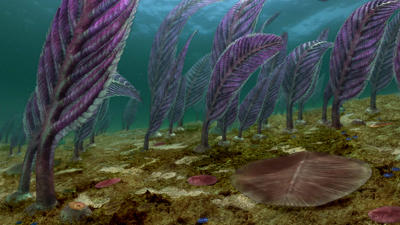
How did life storm the beaches and dominate planet Earth? Ancient Australian fossils offer clues in "Life Explodes". Half a billion years ago, Australia was still part of the super-continent Gondwana. The oceans were teeming with weird and wonderful animals, but the world above the waves remained an almost lifeless wasteland. All that was about to change, though. Host Richard Smith introduces Earth's forgotten pioneers: the scuttling arthropod armies that invaded the shores and the waves of green revolutionaries whose battle for the light pushed plant life across the face of a barren continent. Evolution continued underwater as well, with armor-plated fish experimenting with teeth, jaws, sex, and lungs. NOVA's prehistoric adventure continues with four-legged animals walking onto dry land-and the planet poised for disaster.
s40e17 / Australia's First 4 Billion Years - Monsters
25th Apr '13 - 1:00am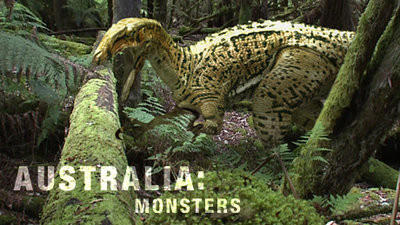
"Monsters" begins Down Under at the dawn of the Age of Dinosaurs. Host Richard Smith comes face-to-face with the previously unknown reptilian rulers of prehistoric Australia. NOVA resurrects the giants that stalked the Great Southern Land and discovers that some of these animals were among the largest ever to have walked the Earth. Others were some of the most dangerous. In the dry desert heart, scientists unearth an ancient inland ocean full of sea monsters. Opal fossils of some of these beasts paint a colorful picture of the exotic seascape, where long-necked plesiosaurs snacked on shelled creatures that grew as large as truck tires. The most fearsome was Kronosaurus, with a skull twice as long as T. rex. But reptiles didn't have the world all to themselves. Mammals like the enigmatic platypus lived alongside them, ready for their moment in the sun.
s40e18 / Australia's First 4 Billion Years - Strange Creatures
2nd May '13 - 1:00am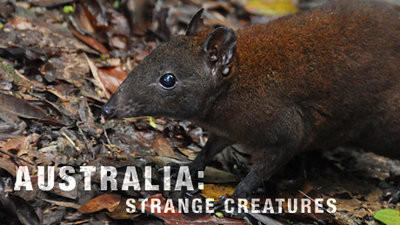
In the wake of the catastrophic asteroid impact believed to have wiped out the dinosaurs, Australia was set adrift on a lonely voyage across southern seas. With host Richard Smith, NOVA travels the walkabout continent to uncover how it became the strange land it is today. In this final episode, "Strange Creatures", NOVA traces the last 65 million years, revealing the events that shaped the Australia we know today. Prehistoric jungles retreated, replaced by eucalypt forests, grasslands, and deserts. When humans first arrived, giant marsupials dominated the land and the Great Barrier Reef was yet to form. This is a tale of calamity and conquest; how a conspiracy of climate, biology, and geology shaped the Earth we now call home.
s40e19 / Manhunt - Boston Bombers
30th May '13 - 1:00am
At 2:50 p.m. on April 15, two bomb blasts turned the Boston Marathon finish line from a scene of triumph to tragedy, leaving three dead, hundreds injured and a city gripped by heartbreak and terror. Less than five days later, the key suspects were identified and apprehended, with one dead, the other in custody. How did investigators transform the chaos of the bombing into a coherent trail of clues, pointing to the accused huggers? NOVA follows the manhunt step-by-step, examining the role modern technology - combined with old-fashioned detective work - played in cracking the case. Given hundreds of hours of surveillance and bystander videos, how did agents spot the bad guys in a sea of spectators? Why couldn't facial recognition software I.D. the criminals? How much could bomb chemistry analysis, cell phone GPS, infrared imagery and crowd sourcing reveal about the secrets behind this horrific crime? With the help of top criminal investigators and anti-terrorism experts, NOVA explores which technological innovations worked - and which didn't - in the most notorious case of today, and how the world of crime fighting could be transformed tomorrow.
s40e20 / Oklahoma's Deadliest Tornadoes
30th May '13 - 1:00am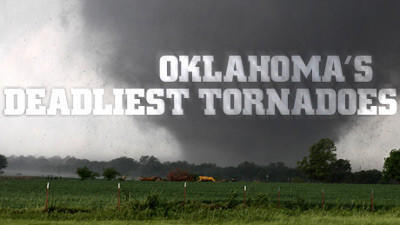
On May 20, 2013, a ferocious EF5 tornado over a mile wide tore through Moore, Oklahoma, inflicting 24 passings and obliterating entire neighborhoods. It was the third time an exceptionally unhappy tornado had struck the city in 14 years. Yet predicting when and where these hugger storms will hit still poses a huge challenge. Why was 2011-the worst ever recorded tornado season that left 158 dead in Joplin, Missouri-followed by the quietest ever year of activity prior to the Moore disaster? Can improved radar and warning technology explain why so many fewer died in Moore than in Joplin? And will tornadoes get worse as Earth's climate heats up? In this NOVA special, we meet scientists in the front ranks of the battle to understand these extreme weather events. We also meet storm survivors whose lives have been upended and learn how we can protect ourselves and our communities for the uncertain future.
- View Season 1 Episodes
- View Season 2 Episodes
- View Season 3 Episodes
- View Season 4 Episodes
- View Season 5 Episodes
- View Season 6 Episodes
- View Season 7 Episodes
- View Season 8 Episodes
- View Season 9 Episodes
- View Season 10 Episodes
- View Season 11 Episodes
- View Season 12 Episodes
- View Season 13 Episodes
- View Season 14 Episodes
- View Season 15 Episodes
- View Season 16 Episodes
- View Season 17 Episodes
- View Season 18 Episodes
- View Season 19 Episodes
- View Season 20 Episodes
- View Season 21 Episodes
- View Season 22 Episodes
- View Season 23 Episodes
- View Season 24 Episodes
- View Season 25 Episodes
- View Season 26 Episodes
- View Season 27 Episodes
- View Season 28 Episodes
- View Season 29 Episodes
- View Season 30 Episodes
- View Season 31 Episodes
- View Season 32 Episodes
- View Season 33 Episodes
- View Season 34 Episodes
- View Season 35 Episodes
- View Season 36 Episodes
- View Season 37 Episodes
- View Season 38 Episodes
- View Season 39 Episodes
- View Season 40 Episodes
- View Season 41 Episodes
- View Season 42 Episodes
- View Season 43 Episodes
- View Season 44 Episodes
- View Season 45 Episodes